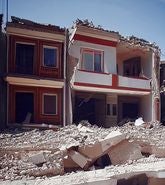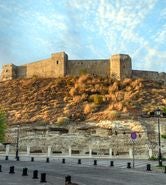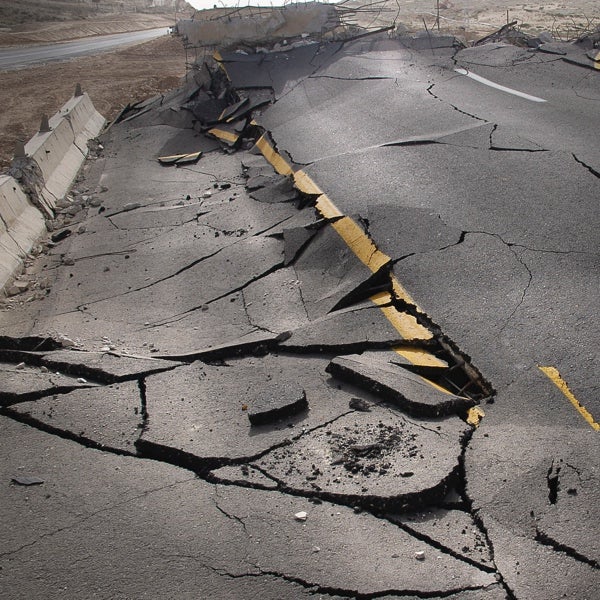Pictures of the devastation in southern Turkey and northern Syria from the Mw7.8 and Mw7.5 earthquakes on February 6, 2023, generate a terrible feeling of déjà vu as we see the term 'pancaked' back in usage to describe the fate of many multi-story buildings.
Unfortunately, we are now seeing headlines familiar to those from other similar tragedies, including previous earthquake events in Turkey.
For instance, a recent Agence France-Presse article about the earthquakes, published in the South China Morning Post, leads with “Fury rises over poor construction standards after buildings suffer ‘pancake collapse.’”
Commenting that some of the buildings that fell apart were only constructed six months ago, the article details that construction firms – some of which it claims were close to the government, overlooked safety standards.
The article also included comments from local technical experts who also blamed poor concrete grade, relaxed regulations, and the low quality of education for engineers and architects for exacerbating the impact of this catastrophe.
In 2016, I published a book entitled 'The Cure for Catastrophe: How We Can Stop Manufacturing Disasters' and although the construction of multi-story buildings using concrete has revolutionized towns and cities around the globe, it can also be said that the misuse of concrete has caused many unnecessary, premature deaths.
Here is a section taken from Chapter Five of the book:
<<<<>>>>>
Chapter Five: Risk Made Concrete
The key to getting concrete and steel to unite their yin and yang properties is called ‘detailing’[i]. Detailing defines precisely what steel reinforcing rods have to be used and how they are to be arranged, an inner metal skeleton supporting the rigid concrete matrix. The twisted steel rods need to be of the right width to give strength to the concrete beam or slab – not too fat and not too thin.
They cannot be placed too close to one another or the beam could split. Bars near the edge of a beam could lead to spalling. The vertical steel bars inside a column need to be bound to one another with confining stirrups so that one bar does not get pulled out of place when the beam is stressed.
Where the beam is longer than the steel, the bars must be carefully overlapped and spliced. The detailing becomes most critical at junctions, where a column meets a horizontal concrete beam, or a column supports a slab, or where a balcony overhangs from a wall[ii].
Today, the configuration of steel rebar is specified by computer-aided design (CAD) software, which models the stresses and strains to which the concrete structure will be subject, both under the live loads in the building and also under earthquake loads. The contractor then has to create the skeleton of steel bars according to the engineer’s precise specifications.
Bending and cutting thick steel rods into the right set of lengths and angles requires a large and expensive machine. The steelwork is laid in position by the contractor, and the engineer returns to check that what has been done is exactly as specified.
The engineer tests that the fresh concrete mix is the right composition, and has not started to set, before the mix is poured into the temporary shuttering, vibrated down to ensure no air pockets, and allowed to slowly set.
You get the picture! This is complicated stuff, more difficult than the most elaborate Escoffier recipe, only with far more serious consequences than a disconsolate diner, if the recipe or detailing goes wrong.
The engineers have to check each other’s work and keep detailed records. Structural engineers have spent four or five years at college, have strong backgrounds in mathematics and physics, and have experience with construction projects. The challenges of working with reinforced concrete and steel created the profession of the structural engineer.
<<<<>>>>>
What is the white powder, first synthesized in the nineteenth century, which has killed more people than any other?
Heroin? Cocaine? Crystal meth?
The answer: Portland Cement.
Worldwide hundreds of thousands have already died and more than a million will inevitably follow over the next forty years. Yet the majority of people entombed in their houses had never bought or touched the powder, but are simply innocent secondary victims.
Since the middle of the twentieth century the mountain roads and desert tracks of Turkey, Iran, and northern Pakistan; the jungle trails of Venezuela, Guatemala, and Ecuador; the barren steppes of Tajikistan and Azerbaijan, have echoed to the roar of overloaded lorries straining uphill, stacked with bags of cement.
Soon there were few villages in Asia or Central America that had not seen a smoke-spewing, open-backed, dust-covered truck, with broken shock absorbers, dumping heavy paper sacks of cement to be sold in the local builder’s yard.
Before 1960 cement was only available in developing countries for big government-financed infrastructure projects like bridges and dams. In 1947 there were four cement factories in Pakistan producing half a million tons each year.
By 2010 production was 44 million tons, a near hundredfold increase in 60 years. There is now a cement glut in many countries, keeping prices low.
In place of a local lime-kiln, or digging out a supply of mud, the key building material was purchased from some distant corporation. Yet cement also brought modernity and globalization. Small-town builders could create five-story apartment buildings and large shop window openings they had only previously seen in the movies.
There was only one problem with the wild architectural dreams triggered by the white powder. No one in the town knew how to build safely with cement. The same artisan builders who had previously mortared stones or bricks to make a wall, now accommodated themselves to the new material.
Steel reinforcing was a particular mystery. Steel is expensive, and a local builder had no chance of finding the equipment to bend steel rods for detailing at connections.
Through the twentieth century, a widening schism opened between rich and poor countries around reinforced concrete. In rich countries, concrete construction designed using the latest finite element software was supervised by qualified engineers. In developing countries, there were no engineers.
Anyone bright and motivated enough to become an engineer has gone to college and emigrated to America or Dubai or Germany. Engineers expect to be well paid.
If reinforced concrete was no more than a formula there would be some chance that the recipe could be followed anywhere in the world. For laying a concrete path it does not really matter if the aggregate was laced with sea salt or the proportion of cement was cut by half.
But for an eight-story building, what is happening inside each beam and joint matters. It is impossible to understand what ‘detailing’ accomplishes unless the designer has been trained as a structural engineer and understands materials and forces and failure tolerance.
Once the concrete is poured the detailing is completely invisible, unless and until the building has collapsed (when you can sometimes find drinks cans, cigarette packets, and short sections of steel reinforcing in a cavity – with no concrete attached).
The lessons on building failures collected on earthquake field missions in Pakistan or Haiti today are pretty much identical to those gathered fifty years ago (so that structural engineers get bored of seeing them). Bad design, bad execution, bad reinforcing, bad concrete.
The schism between the rich world and the developing world over reinforced concrete construction has been known for seventy years. After the 1944 earthquake demolished the adobe city of San Juan in Argentina, a local judge demanded that all future construction be entrusted to engineers: ‘not builders with no technical knowledge or homeowners themselves’[iii].
For an untrained builder, to create a building out of concrete without the attention of a structural engineer is like giving a child a loaded automatic weapon.
You can get some idea about the impact of the great wave of concrete construction in lower and middle-income countries by surveying what happened in earthquakes.
In the Mw7.3 earthquake that hit Adapazarı, Turkey in 1967, eighty-six people died. The majority of residential buildings were of wood and stone construction. They took some damage but generally stayed standing.
Thirty years later, on August 17, 1999, the similar-sized Mw7.4 İzmit earthquake broke to the west of the 1967 shock at Kocaeli, some 37 miles (60 kilometers) south of Istanbul. 115,000 buildings collapsed and 17,118 died.
The fallen buildings included more than three thousand total ‘pancake’ collapses of five- to seven-story unlicensed concrete apartment blocks, built within the previous thirty years[iv]. (Any more stories and the tenants would require an elevator, which would invite the attention of an engineer.)
<<<<>>>>>
In conclusion, here we are some 24 years after the İzmit earthquake, and with the same headlines. With the United Nations stating that fatalities could double from the current 30,000 plus total, once again we are reminded of the need to get serious about how we can responsibly construct buildings with concrete in earthquake-prone areas.
Extract taken from ‘Chapter Five: Risk Made Concrete’ from ‘The Cure for Catastrophe: How We Can Stop Manufacturing Natural Disasters’ by Robert Muir-Wood.
Published in 2016 by Basic Books (U.S.) and Oneworld Publications (U.K.) – and also available on Amazon.
References:
[i] "The Art of Detailing." Cement.org. Portland Cement Association. Web. June 24, 2015.
[ii] "Detailing of Reinforcement in Concrete Structures." R.I. Gilbert. August 28, 2012. The Civil and Structural Engineering Panel - Australia Sydney Division Engineers.
[iii] Mark Alan Healey, Chapter Four,
Healey, Mark Alan. "The ‘Superstition of Adobe’ and the Certainty of Concrete: Shelter and Power After the 1944 San Juan Earthquake in Argentina.” Aftershocks: Earthquakes and Popular Politics in Latin America. Buchenau, Jürgen, and Lyman L. Johnson, eds. University of New Mexico Press, 2009: 100-28.
[iv] Marza, Vasile I. "On the death toll of the 1999 İzmit (Turkey) major earthquake." European Seismological Commission, Proceedings (2004).








